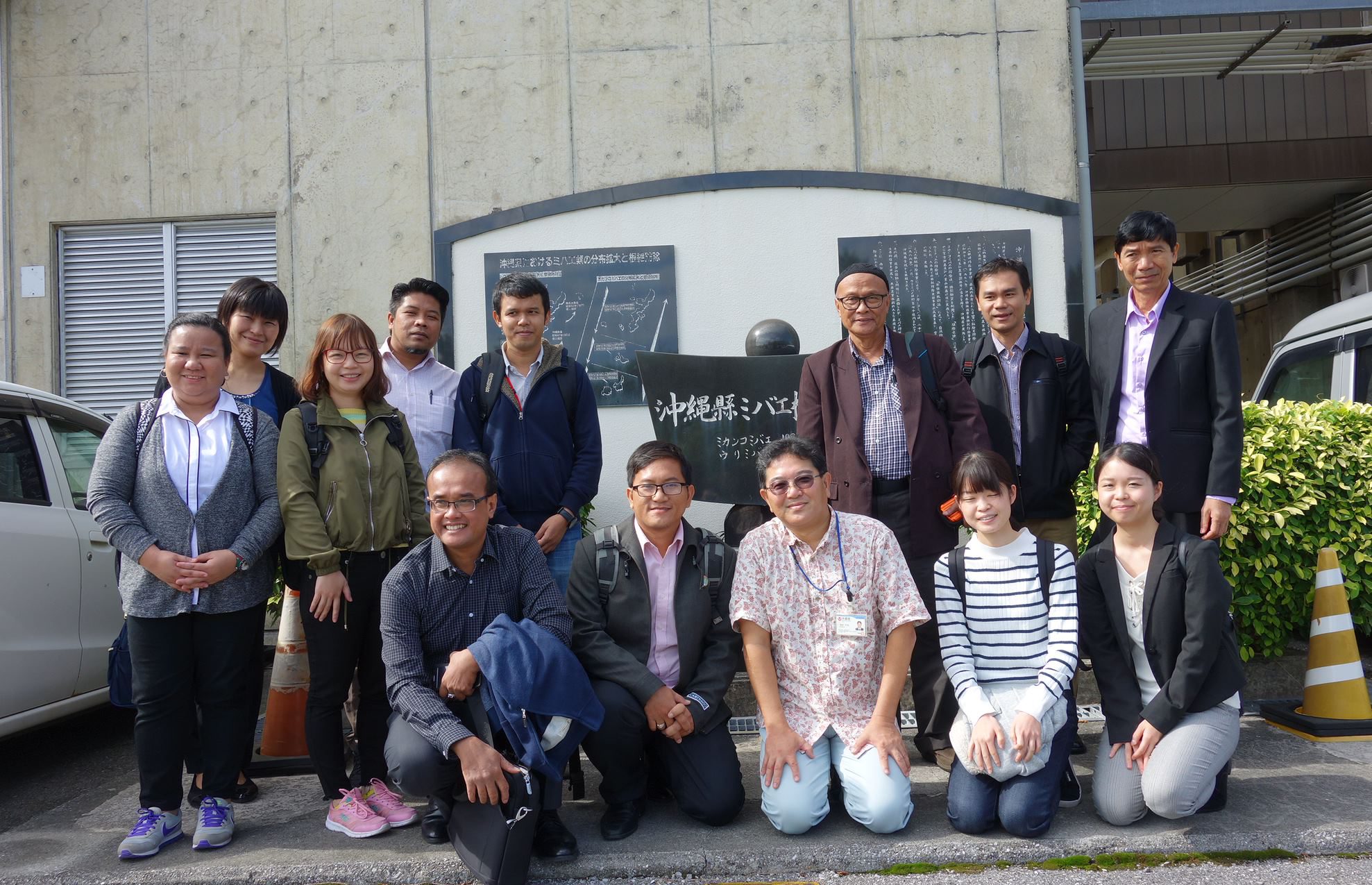By JAIF Management Team
Half of emerging plants diseases are spread by global travel and trade, according to a report by the Food and Agriculture Organization (FAO) of the United Nations.1 With the increasing volumes of agricultural trade in the ASEAN region, quarantine procedures must be able to deal with the potential pathways for pests and diseases.
Indeed, ASEAN Member States have long recognised the need to develop and strengthen capacities in taxonomic knowledge to identify and manage quarantine risks associated with agricultural commodities and to accurately diagnose pests and diseases. Endorsed by the ASEAN Sectoral Working Group on Crops, the ASEAN Regional Diagnostic Network (ARDN) has been established. It is “envisaged as a system that provides identifications of organisms of agricultural importance – especially plant pests, diseases, and weeds – detected in the Southeast Asian region.” Among others, ARDN provides a framework for enhancing the national and regional diagnostic capacity by carrying out taxonomic capacity building programs among ASEAN professionals.
Over the past few years, JAIF has been committed to supporting ARDN through the project Taxonomic Capacity Building to Support Market Access for Agricultural Trade in the ASEAN Region. A database of experts and diagnostic laboratories has been developed under this initiative. In addition, nearly 70 plant health professionals have participated in capacity building activities, including two participants from Indonesia and Singapore, who reflected on their experiences during the trainings.
Mr. Hendrawan Samodra, Senior Plant Quarantine Officer, Center for Plant Quarantine and Biosafety, Agricultural Quarantine Agency of the Ministry of Agriculture, Indonesia
 Visit to a fruit flies eradication project at the Naha Plant Protection Station in Okinawa
Visit to a fruit flies eradication project at the Naha Plant Protection Station in Okinawa
©ASEAN Plant Health Cooperation Network (APHCN)
A training workshop on the identification of fruit flies, which was combined with study visits to national plant health laboratories in Japan, was Hendrawan’s first training after joining the Center for Plant Quarantine and Biosafety, Agricultural Quarantine Agency of Indonesia in 2017. “These capacity building activities were very beneficial for me personally and for my workplace institutionally,” the officer said. He was able to obtain knowledge that are applicable in Indonesia. “By learning about the plant quarantine system at Haneda Airport, I was able to gain practical knowledge to improve the quality of plant quarantine system in Indonesia. A study visit to the Naha Plan Protection Station in Okinawa was highly relevant to the tropical fruit export process from Indonesia. For example, when exporting mangosteens, we have started to provide a more detailed technical guidance related to the requirement of export destination countries, such as the cleaning process and pest reinfestation prevention.”
Hendrawan visited seven plant quarantine facilities during his two-week visit in Japan. The most notable one was the visit to the Post Entry Quarantine (PEQ) facilities in Tsukuba. “PEQ facilities in Japan are very good. Unfortunately, we don’t have PEQ facilities yet in Indonesia. It is our dream to have PEQ facilities like the one in Tsukuba and this study visit certainly encouraged us to build our own PEQ facilities in the future.”
 .
. 
Hendrawan with other plant health officers visited the Post Entry Quarantine (PEQ) in Tsukuba
©APHCN
While recognising the challenges in plant quarantine systems still ahead for his country, Hendrawan had the opportunity to share the knowledge he acquired by teaching morphological identification of fruit flies to new plant quarantine officers at the Applied Research Indonesian Agricultural Quarantine (ARIAQ).
Ms. Ariene G. Castillo, Senior Scientist, National Parks Board, Animal and Plant Health Centre, Singapore


Ariene during the Training Workshop on Diagnostics of Leafminers of Agricultural Importance conducted in Bogor, Indonesia
©APHCN
As one of the outstanding participants during the training workshop on diagnostic of leaf miners, Ariene was selected to join a two-month attachment program in Japan. The program allowed her to gain more in-depth knowledge on taxonomical identification of economically important leaf miners. The senior scientist also recounted the time she walked for 12 km to collect specimens in Yamatokoriyama City, Nara Prefecture. “We examined plants with symptoms of mining and signs of leaf mining larvae or pupae from plants, such as Prunus sp. (Sakura) and Quercus sp. (Oak).”
 Collection of Leafminers in Mt. Takamado, Nara Prefecture
Collection of Leafminers in Mt. Takamado, Nara Prefecture
©Ariene G. Castillo
The attachment program engaged 17 Japanese experts and researchers from different universities and institutions across Japan to teach the participants different techniques to diagnose leaf miners. “I had the opportunity to study in different parts of Japan from north to south regions. The experts showed different diagnostic skills by combining traditional and molecular techniques for leaf miners and other pests, which broaden our diagnostic capability and competency to handle all pest diagnoses.” She further added that the program allowed the participants to create a network for information exchange and tapping diagnostic experts, which will expedite the identification of new or unknown pests in the future.
After participating in the attachment program, Ariene was able to transfer the skills she obtained during the attachment program to other entomologists in her organisation. She believes that the program is not only increasing her confidence but also contributing to capacity enhancement of her institution.
The project “Taxonomic Capacity Building to Support Market Access for Agricultural Trade in the ASEAN Region” was supported by the Japan-ASEAN Integration Fund (JAIF) and implemented in 2019. It is succeeded by the second phase which started in the same year and is expected to continue until 2023. The second phase is expected to benefit 40 plant health officers from ASEAN Member States.
1 IPPC Secretariat. 2021. Scientific review of the impact of climate change on plant pests – A global challenge to prevent and mitigate plant pest risks in agriculture, forestry and ecosystems. Rome. FAO on behalf of the IPPC Secretariat.
Sectors
Funding Framework



